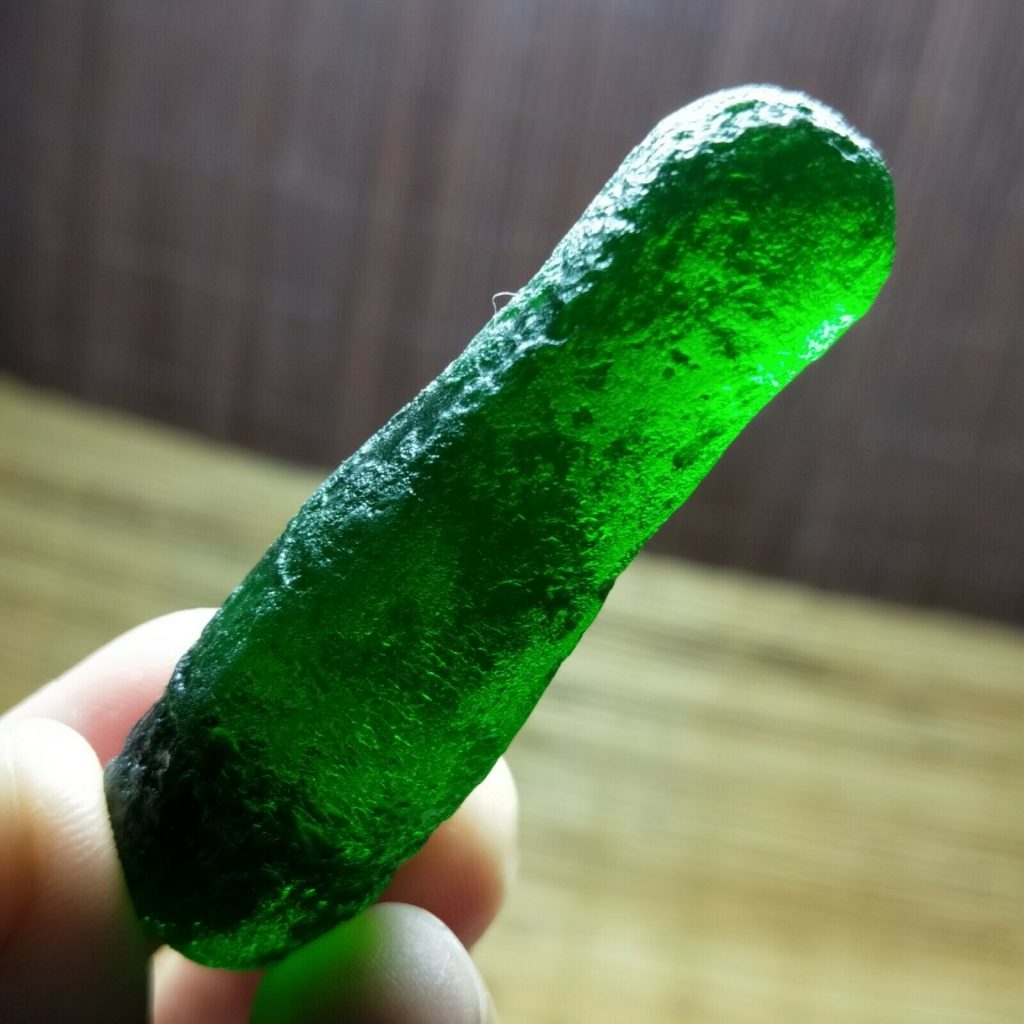Have you ever wondered why there is so much fake Moldavite being sold?
Manufacturers from factories in locations such as China and India are using sneaky methods to create fake Moldavite. This article will go through some of the methods so you’ll know the signs and be able to avoid fake Moldavite. There are several production methods used including hydrofluoric acid, drilling, sculpting with a rotatory tool and mould casting.
For an accompanying guide. See “The Best Guide on Spotting and Avoiding Fake Moldavite” www.stonesoftransformation.com.au/the-best-guide-on-spotting-and-avoiding-fake-moldavite/
Method 1 – Hydrofluoric acid
A common way to sculpt green glass to depict a surface most similar to natural Moldavite is through the use of hydrofluoric acid. Acid is used to selectively dissolve parts of the glass and completely changes its appearance.
Testing of these fake Moldavite found traces of varnish and wax on the surface. These materials were used to cover parts of the green glass to produce an uneven sculpting and more variation between individual pieces of glass to avoid having identical pieces produced.
Picture: Sculpting of glass with hydrofluoric acid

Method 2 – Drilling and then acid
Evidence of drilling has been found on fake Moldavite. A rotatory jewellery tool was likely used to create holes and grooves in the green glass. Hydrofluoric would then be used to smoothen the drilled holes and grooves to disguise the work done on it.
Close inspection of these fake Moldavite under a strong magnifier found evidence of drill marks and residue of hydrofluoric acid.

Drill marks 
Drill marks 
Drill marks – close up 
Drill marks – close up 
Drilled fake Moldavite sold in France
Method 3 – Sculpting and then acid
A rotatory jewellery tool or similar is used to create lighter surface sculpting such as valleys and pathways on the surface. Hydrofluoric acid would then be used to smoothen the surface.
These Moldavite can look too perfect with a uniform surface sculpting.

Sculpting using a jewellery tool 
Sculpting using a jewellery tool
Method 4 – Mould casting
Mould casting is casting molten glass into a mould. The molten glass will cool and a Moldavite shaped glass is produced. A grinder is used to clean the rim where the mould would have left seam marks.
The mould is can be based on a real Moldavite and can come in a variety of shapes from primary shapes (e.g. tear drops) to fragments. This fake Moldavite may look unnaturally perfect.
Want more useful information?
See the guides:
Guide to Genuine and Fake Moldavite: www.stonesoftransformation.com.au/blog/fake-moldavite-guide/
The Best Guide on Spotting and Avoiding Fake Moldavite: www.stonesoftransformation.com.au/the-best-guide-on-spotting-and-avoiding-fake-moldavite/
Shapes of Moldavite: www.stonesoftransformation.com.au/blog/guide-to-the-shapes-of-moldavite/
Busting myths of Moldavite: www.stonesoftransformation.com.au/busting-some-myths-of-moldavite/
Other useful guides and blog posts: www.stonesoftransformation.com.au/blog/list-of-useful-posts/
Follow our Facebook page for updates on great information: www.facebook.com/StonesofTransformationMoldaviteStore
Customer reviews: www.stonesoftransformation.com.au/reviews/
Shop and sale page: www.stonesoftransformation.com.au/shop/




